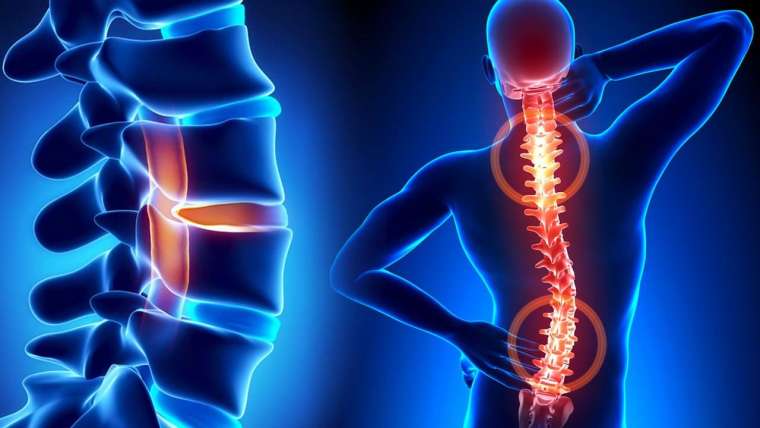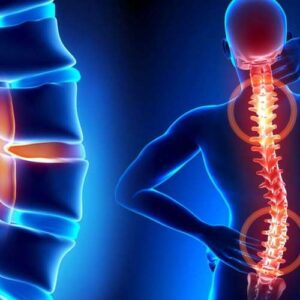
Scoliosis

What is scoliosis? What are its causes and symptoms?
When looking at the spine from behind, the curvature can be noticed even when standing upright, but sometimes it is not so obvious and can only be detected when bending forward, during checkups and x-rays.
What is Scoliosis?
Scoliosis is a sideways curvature of the spine that can be seen in the thoracic or lumbar regions. In a normal, healthy spine, the vertebrae form a straight line from top to bottom when viewed from behind, encompassing the neck, back, and lumbar regions. In scoliosis, the vertebrae shift to the right or left, and the spine rotates around its axis.Scoliosis Symptoms
Scoliosis is a condition that threatens the future of children in adolescence. When diagnosed early, treatment success rates are close to 100%. However, if spinal curvatures are not diagnosed early and progress, they can hinder children's normal development. In adulthood, back pain, heart and lung dysfunction can occur.Scoliosis affects 2-3 out of every 1,000 people, requiring active treatment, and 1 out of every 1,000 requires surgery. Scoliosis is easily detected by the discerning eye. These symptoms include:
• There is an inequality between the hips and shoulder levels.
• The equality of the distance between the arms and the body and the balance of the body are disrupted.
• Because the head is thrown to one side and the body to the other, children get the feeling that one of their legs is longer.
• A part of the girls' skirt is pulled up.
• Asymmetry in the rib cage and a hump on one shoulder blade can be observed.
• The equality of the distance between the arms and the body and the balance of the body are disrupted.
• Because the head is thrown to one side and the body to the other, children get the feeling that one of their legs is longer.
• A part of the girls' skirt is pulled up.
• Asymmetry in the rib cage and a hump on one shoulder blade can be observed.
Patients presenting with this complaint are found to have scoliosis.
How is Scoliosis Diagnosed?
The diagnosis of scoliosis is determined by the findings of an upright x-ray of the entire spine and a physician's clinical examination. Plain films of the spine are sufficient, but an MRI is rarely necessary. Spinal flexibility is tested. Anteroposterior and lateral radiographs of the entire spine, taken in a standing position, are sufficient to establish the diagnosis and determine the degree of scoliosis curvature. These radiographs measure the angle of deviation between the vertebrae where the curve begins and ends, and patients are monitored based on the progression of this angle. This angle is called the Cobb angle. The degree of vertebral rotation is also determined from these radiographs. If the angle is greater than 10 degrees, scoliosis is diagnosed. The Cobb angle and degree of vertebral rotation are crucial parameters for assessing the progression of scoliosis and monitoring the results of conservative treatments. Because scoliosis progresses with age, it is necessary to determine the child's bony development. Therefore, wrist and hip radiographs are sometimes used to determine children's growth status and the level of ossification.Non-surgical treatment
Angles below 10 degrees: This degree, medically known as "spinal asymmetry," has no impact on a person's health. For a curve to be treated, it must be greater than 10 degrees. To prevent minor curves from posing a risk of scoliosis in the future, the patient should be examined at regular intervals. The key here is to determine whether the scoliosis is progressing.Angles between 20 and 40 degrees: Curves between 20 and 40 degrees are most common during adolescence. This degree is considered moderate scoliosis, and exercise, physical therapy, and bracing are often quite effective.
Angles at 40 degrees:Scoliosis curves of 40 degrees have largely completed their growth and progression. For surgery, the back curve must be greater than 45-50 degrees, and the lumbar curve must be 40 degrees.
SURGICAL TREATMENT
Surgery is the most appropriate treatment for patients with continuing growth and a curve greater than 40 degrees (>40°). Surgery is recommended for these curves to prevent complications and improve cosmetic outcomes.Congenital scoliosis can be treated at younger ages and in varying degrees. Surgical treatment involves straightening the spine using screws and rods placed in the back and/or waist. Advances in surgical techniques and adjunctive methods such as neuromonitoring (imaging spinal cord functions) are highly beneficial in reducing potential complications during surgery and increasing the success of the surgery. Our clinic boasts the infrastructure found in modern spine surgery centers, and scoliosis surgeries are performed successfully at our clinic.
